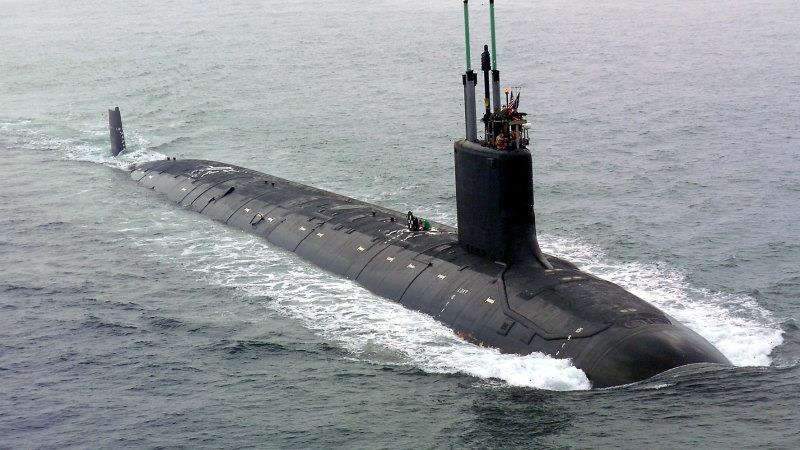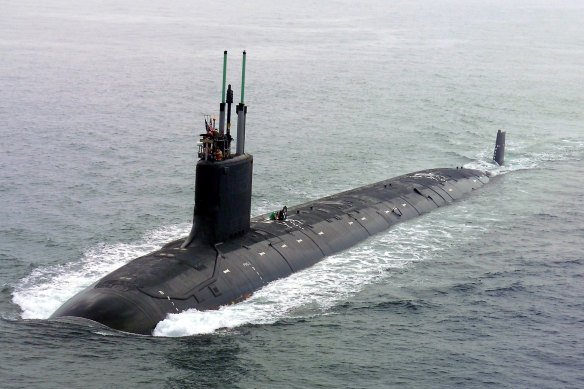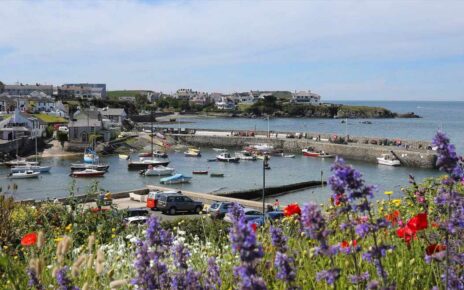Washington: They’re the multibillion-dollar nuclear submarines Australia will purchase from the US to help safeguard the Indo-Pacific against the growing threat of China.
But what exactly are Virginia-class subs, and how do they work? Who builds them, and where are they based? And with Prime Minister Anthony Albanese set to join his US and UK counterparts this week to unveil the role these subs will play in the AUKUS military pact, what are the risks and challenges ahead?
Australia is expected to announce it will buy up to five Virginia-class nuclear submarines from the US as a stopgap.Credit:
Described by Naval Submarine Forces Commander William Houston as the “apex predators” of the sea, Virginia-class submarines are nuclear-powered fast-attack vessels that can seek and destroy enemy ships, conduct land attacks, and carry out intelligence, surveillance and reconnaissance missions.
There’s one moored at Pearl Harbour sponsored by former First Lady Michelle Obama. There’s one under construction in Newport called Barb, after the fish of the same name. And there’s one called the USS Mississippi that slipped into Fleet Base West off the coast of Perth for a routine visit last November, much to the excitement of Defence Minister Richard Marles.
“I had the opportunity to tour the USS Mississippi as part of my visit to Pearl Harbour in Hawaii last month, alongside US Defence Secretary Lloyd Austin,” Marles said at the time.
“Their stay in WA will provide those on board with much-needed respite as they continue to ensure a secure and prosperous Indo-Pacific.”
Spanning about 115 metres in length, Virginia-class submarines can accommodate a crew of up to 132 people. They’re also heavily armed – each boat can carry about 37 torpedo-sized weapons, including Tomahawk missiles – and the torpedo room itself can be reconfigured to house special operations forces and equipment for long deployments.
What’s more, Virginia-class subs can stay submerged for up to three months at a time and travel at speeds of more than 46 kilometres per hour. As such, they’ll allow the Australian Navy to reach as far as the South China Sea and the East China Sea, in the event of a potential war with China.
But for all the benefits, these nuclear submarines are extremely difficult to make – and they’re certainly not cheap. According to the latest Congressional research, a single boat, which has a shelf life of about 33 years, can cost about $US3.6 billion ($5.5 billion) to build and requires 9 million labour hours and thousands of suppliers.
Given the US has struggled to reach the Navy’s target of building two a year, it begs the question: how will Australia fare when it comes to finding its own AUKUS-ready nuclear workforce?
“It’s one of the biggest challenges with AUKUS,” says Mark Watson, the Washington director of the Australian Strategic Policy Institute.
“We’re already having some difficulties recruiting to targets in the Australian Defence Force. Now you’ve got to convince people to join the Navy, then convince those people to be in a submarine force, then find people who can be trained as nuclear engineers – and that’s even before you get to the industry integration of building and maintenance.”
If the leaked reports are to be believed, the “optimal pathway” for AUKUS will involve buying up to five Virginia-class subs from the 2030s as part of the landmark defence agreement Albanese will unveil in San Diego this week alongside US President Joe Biden and UK Prime Minister Rishi Sunak.
This is designed to tackle a capability gap as the Collins class fleet is phased out, before our own purpose-built AUKUS alliance submarines can come online, with input from the three countries involved and largely assembled in Adelaide. It is possible the subs purchased by Australia will not be newly built but recycled existing Virginia class models, which would make them cheaper to buy.
In the US, Virginia-class nuclear subs are built by two companies: GD Electric Boat in Connecticut and Huntington Ingalls Industries in Virginia.
They’re essentially constructed like separate Lego modular pieces: Electric Boat builds the engine room and control room, while the Huntington facility builds the stern, machinery spaces, torpedo room, habitability, sail and bow. Both facilities then take it in turns to build reactor compartments and perform the final assembly of the boats.
But the industry has had difficulties with COVID-era supply chain bottlenecks and workforce shortages in recent years, fuelling fears the AUKUS pact could overstretch the industrial capacity of US shipyards “to breaking point”.
Indeed, in a dramatic intervention last December, two US Senators, Jack Reed and James Inhofe, wrote to Biden explicitly warning against any plan to sell or transfer Virginia-class submarines to Australia before the US Navy has met its current requirement.
At a workshop in Connecticut in January, Adele Ratcliff, director of the US Defence Department’s Industrial Base Analysis and Sustainment program, also highlighted the challenge, noting that while recent funding increases had helped address the “industrial atrophy” that set in during the post-Cold War era, workforce development an ongoing issue.
“We must recruit,” Ratcliff said. “And we must recruit those we may not be used to recruiting ― single mums and AAU coaches who we need to tell kids about career opportunities. We have to recruit in our communities right here. We are not moving our shipyards any time soon.”
The companies are now trying to do exactly that. At a legislative update last week, Electric Boat president Kevin Graney told members of Congress the company had set an ambitious goal to recruit 5700 employees over the next two years.
It has also held 400 hiring events in 2022 and continued partnerships with colleges and universities to train welders and other boat-building personnel. Last month, it even ran an ad at the Super Bowl calling for more workers.
“Everyone who’s seen the news of late knows we’ve seen an emergent China and Russia, and we are facing near-peer threats from both of these nations,” Graney said last week. “Those threats really constitute why Electric Boat’s platforms and our services are – and will continue to be – in high demand.”
Get a note directly from our foreign correspondents on what’s making headlines around the world. Sign up for the weekly What in the World newsletter here.
Most Viewed in World
From our partners
Source: Read Full Article



